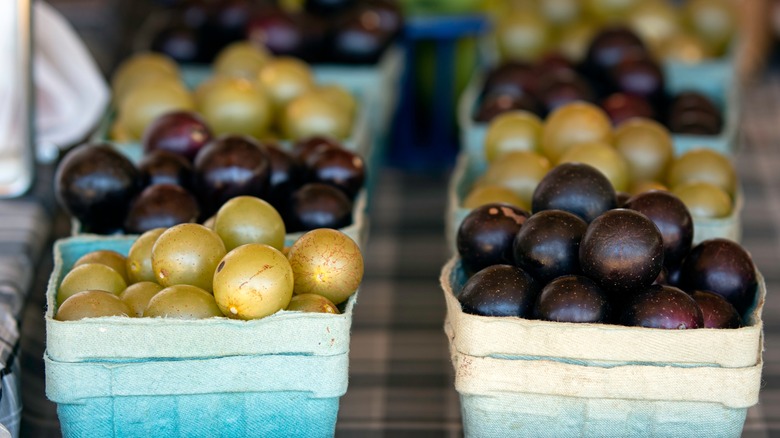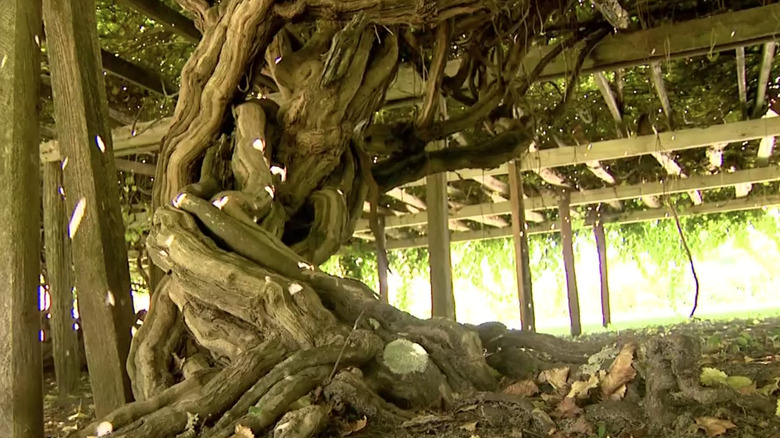Scuppernong Wine — The Fun-To-Pronounce Wine You've Never Heard Of Until Now
Scuppernong is a great word. Like something from Lewis Carroll's classic poem, "Jabberwocky", or a Dr. Seuss book — it sounds like something someone made up for fun. But it's definitely a real word, and the item it describes is a sweet one. The "scupper" part comes from the Algonquin word "ascopa," meaning "sweet bay tree," and the suffix indicates "the place of." Apparently, there was once a place in North Carolina where a lot of Scuppernongs grew very near a sweet bay tree.
Scuppernongs are a vine known as Vitis rotundifolia, one of the grape varieties native to the Southeastern United States. Specifically, Scuppernongs are a type of muscadine grape, all of which are native to the Americas. Scuppernongs are one tough cookie, too, which is part of what helps them thrive. While most grapes have 38 chromosomes, Scuppernongs have 40 and are resistant to both Pierce's disease and phylloxera, making them relatively easy to grow without pesticides. Thick-skinned and either green or bronze-colored, they are big and beautiful to behold.
Unlike many other wine-bearing fruits, they are not heat sensitive — they thrive in semi-tropical climates and prefer full sun to shade, making them perfect for sweltering Southern temperatures. It doesn't take much to get them going, either. As one Scuppernong farmer laconically put it, "It likes poor soil, which we have" (via Tennessee Farm Table). This statement has some interesting potential when it comes to Scuppernong terroir, or how soil affects the way a particular wine tastes.
The Mother Vine wine
Muscadines can be used for winemaking, and Scuppernongs are one of the best types of muscadines to use because they are larger and sweeter. They can be used to create both sweet and dry wines and the finished product presents the true flavor of muscadine grapes: sweet, slightly bitter, and earthy. One challenge of making wine with these grapes is that ripe Scuppernongs are lower in sugar than other grapes, which means that winemakers need to add sugar to get the fermentation process going. But while the grapes have been around for a long time, their large-scale wine potential still remains largely untapped, though people have been making it themselves for generations. We're not sure if there's an Instant Pot recipe for Scuppernong wine yet.
Some of the Scuppernong wines available are steeped in history, and literally rooted in it. Roanoke Island, North Carolina, is home to the "Mother Vine." Planted around 1584, it is easily the oldest Scuppernong vine in the world at over four centuries old and is one of the oldest living vines in the world, period. In recent years, cuttings from it have been used to develop vineyards at other sites as well, including Duplin Winery in North Carolina, which produces a sweet white wine appropriately called "Mothervine." It's a sip of history. And, who knows, maybe of the future, too.

